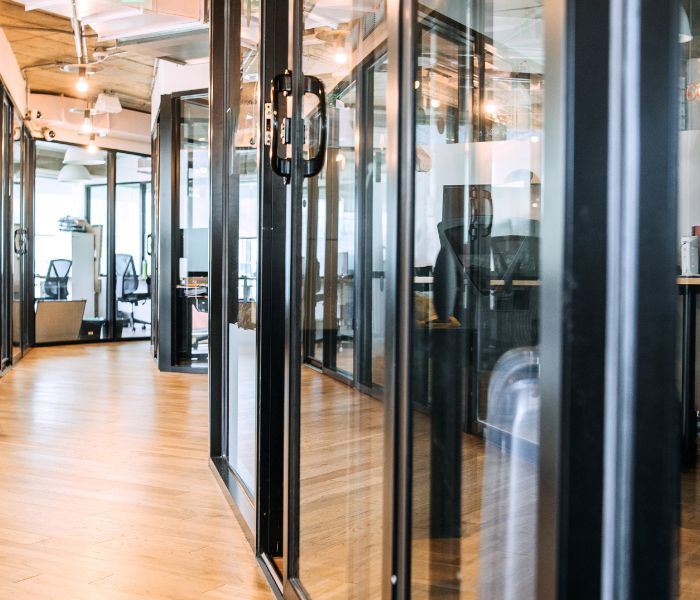Preventive Maintenance Program
Having a useful preventive maintenance program is often the difference between having a lot of downtime in your industry versus not.
Preventive maintenance exists to help keep businesses running that require the use of many moving parts. Every company uses some machine to function; whether it be printers, copiers, grills, cranes, or forklifts, every industry has something it needs to operate efficiently.
Without these machines, production will slow or stop causing valuable time lost and plenty of profits lost for the business.
Let’s learn about how we can use preventive maintenance to keep our businesses up and running at all times.
What is Preventive Maintenance?
Preventive maintenance, or preventative maintenance, is when someone performs work on a piece of equipment while it’s still running. The maintenance is usually the diagnosing of a further issue that may occur in the future or fixing of something that is happening right now.
It’s essential to understand why these maintenance tasks are so critical to the operation of a business.
Scheduling preventive maintenance is the difference between having a machine that works perfectly all the time and one that always breaks down.
Many businesses that don’t have a maintenance schedule leave the performance of their machines up to reactive maintenance. This is when the machine doesn’t receive the attention it needs until it breaks down. In manufacturing, this could mean plenty of hours lost when the device doesn’t work, and production stops.
Types of Preventive Maintenance
Two situations would trigger the need for preventive maintenance. When you’re trying to develop a maintenance schedule, you’ll use these two points on the schedule.
Time-Based Maintenance
Time-based maintenance will use time to determine when the machine needs attention again. For example, a particular machine in a production line may require maintenance every 60 days. During that period, it could need lubrication, cleaning, and a simple checkup to determine if everything is running smoothly.
Inspections based on time are usually critical components of a production line, and they would have a severe impact on the business’s ability to operate without it.
Usage-Based Maintenance
Another trigger is the usage of the machine. If some machines or devices in the business don’t get used as much as others, they might have a usage-based trigger. These could be revolutions, miles, or cycles. For example, a car needs maintenance every 10,000 miles. A CNC grinder might need attention every 25,000 revolutions.
When Should You Use Preventive Maintenance
While we’re talking about and preaching the importance of preventive maintenance, there are some instances where you wouldn’t need it. You don’t want to put machines or devices that are not critical to your operation into the maintenance schedule because they will slow down the overall workflow.
There are also some things like circuit boards that you cannot perform maintenance on. You can check them and look into possible problems that may occur, but your support will not make a difference to whether or not they’ll function properly.
In this situation, the person performing the maintenance is not helping the production line; they’re wasting their time on something that can experience failure at any second no matter what you do.
So, when should you have a preventive maintenance program? Here are some instances where preventive maintenance is essential:
- The machine has a critical operation
- You can prevent failure with regular maintenance
- Failure increases with use or time
You can see from these points above that these would be situations where preventive maintenance can help the business function more efficiently. If you’re implementing a preventive maintenance program, you’re helping prevent downtime, and you might even be improving the overall performance of the machines while they’re running as well.
Ensure that your maintenance management team understands the importance of only performing maintenance on the machines that are an essential part of your operation.
Preventive Maintenance Prepping
Having a CMMS software makes preventive maintenance much more manageable. Work orders occur after a certain amount of use or time, and it’s nearly impossible to keep track of that data without a software tracking it for you. If there are multiple or many machines in your business, you know that no single person or department can manage that.
CMMS allows you to set preventive maintenance triggers that make sense for each piece of equipment. This way, you don’t have to leave anything up to chance.
Many businesses will use a full scope time table to determine when preventive maintenance is necessary. The problem here is, you can’t use the same amount of time for every machine. Some will break down faster than others.
Upsides of Preventive Maintenance
By now, you probably see a lot of the advantages of having a preventive maintenance program. Having proper planning is what makes a difference with maintenance. You can never truly predict when something will go wrong, so you always need to be ahead of the game. The only way to stay ahead of the game is with preventive maintenance.
If we compare preventive maintenance to reactive or unplanned maintenance. These methods typically cost as much as nine times more than preventive maintenance.
Consider the overhead costs to pay employees and staff while production is slowed or stopped. Not to mention possible losses in revenue and even customer base if they’re waiting too long to receive their product or service while your machines are down.
There is also the shipping and handling consideration. With preventive maintenance, you can catch an upcoming problem before it becomes a problem. The maintenance management team can look at a machine and see that it has a worn gasket that may break in a few weeks.
You can then hand that over to the procurement team and ensure the part comes in before the machine breaks down.
If you wait for it to break down, the machine might be down for days until you get the part, and you may have to pay for a more expensive form of shipping to get it to you faster.
Downsides of Preventive Maintenance
The main disadvantage of preventive maintenance is that it requires preparation and planning. It’s more complicated to schedule maintenance on all your machines and invest resources into something that doesn’t yield an immediate return.
That said, you always need to keep the consequences in the forefront of your mind. There may be an investment up front, but you’re reaping the benefits of that investment every time you turn the machine on.
Another downside is if maintenance occurs too often. It’s essential to make sure you plan maintenance, so you’re not spending too much time on machines that don’t need it. The schedule needs to get optimized for time and efficiency.
You can also use condition monitoring and analysis to reduce the frequency of preventive maintenance. Adding analysis to your schedule is a great way to take a quick look at the condition of the machine without needing to get involved and spend too much time on it. You can offset the cost of maintenance this way.
Understanding Your Preventive Maintenance Program
The overall goal of a preventive maintenance program is to save you money and time by planning and preparing upfront for machine breakdowns. You must consider using a CMMS software to help otherwise; you’ll never be able to keep track of your machines maintenance schedule.
It is almost always better to choose preventive maintenance over reactive maintenance. Implementing this strategy will keep you organized and efficient at all times.
The final and most crucial point is to ensure that all members of the maintenance staff get appropriately trained regarding your new program. They need to understand the importance of preventive maintenance and how it will make a difference in your business. Without proper training, they may skip and overlook critical issues that will lead to downtime.
Use preventive maintenance correctly, and you’ll save money and precious work hours.











